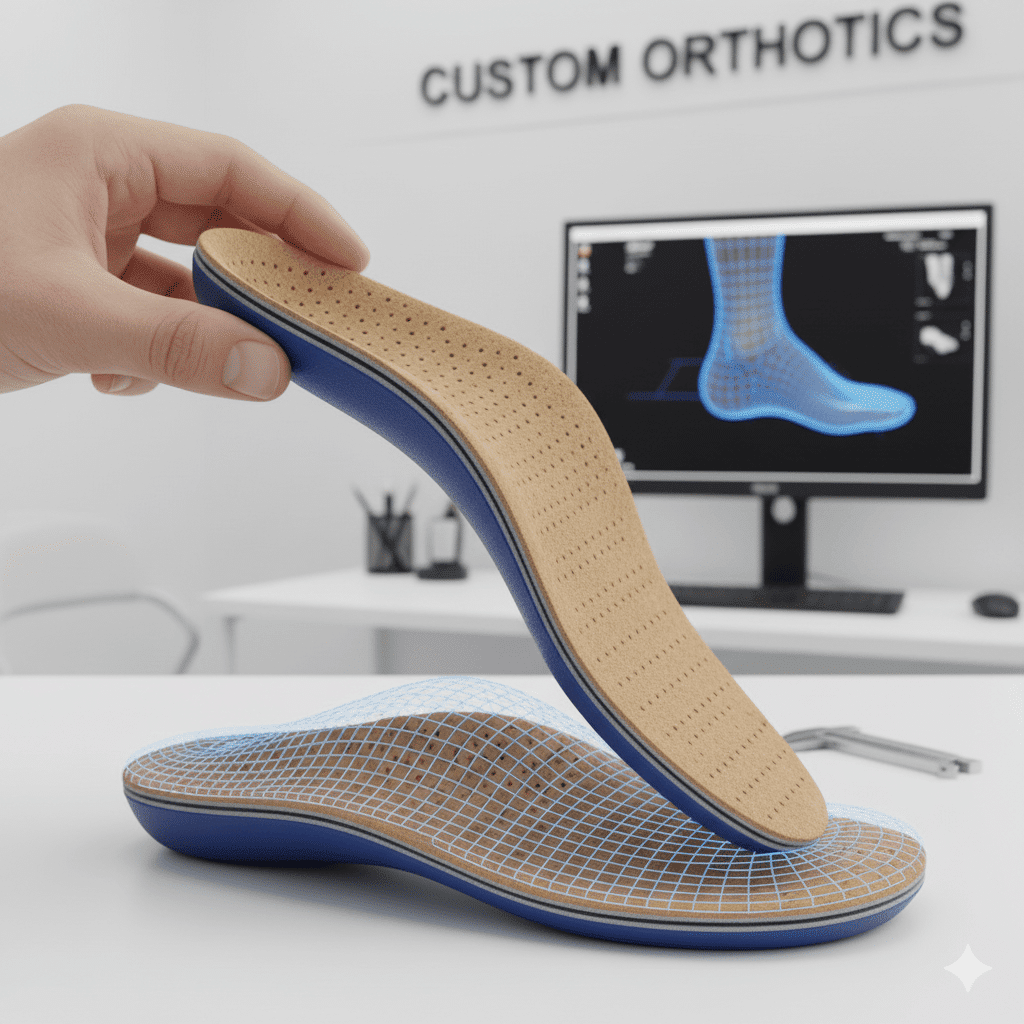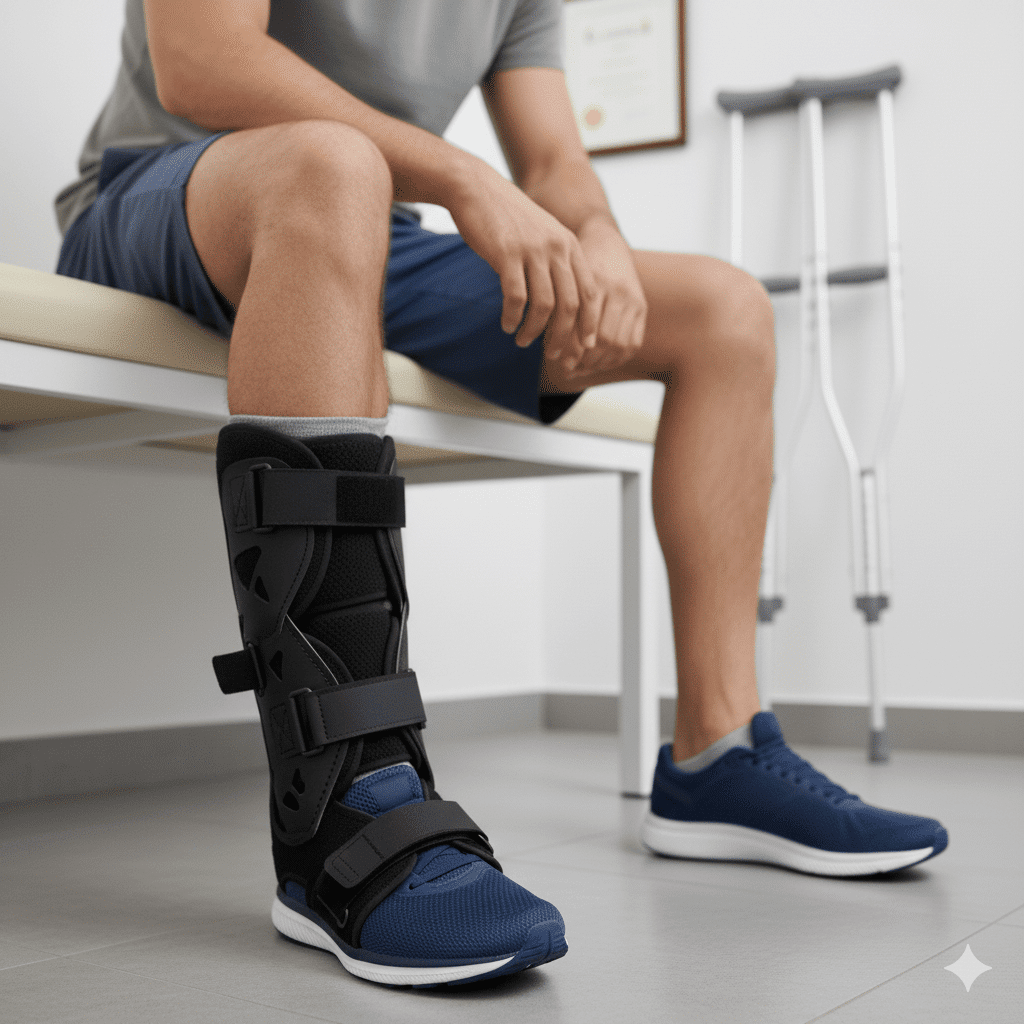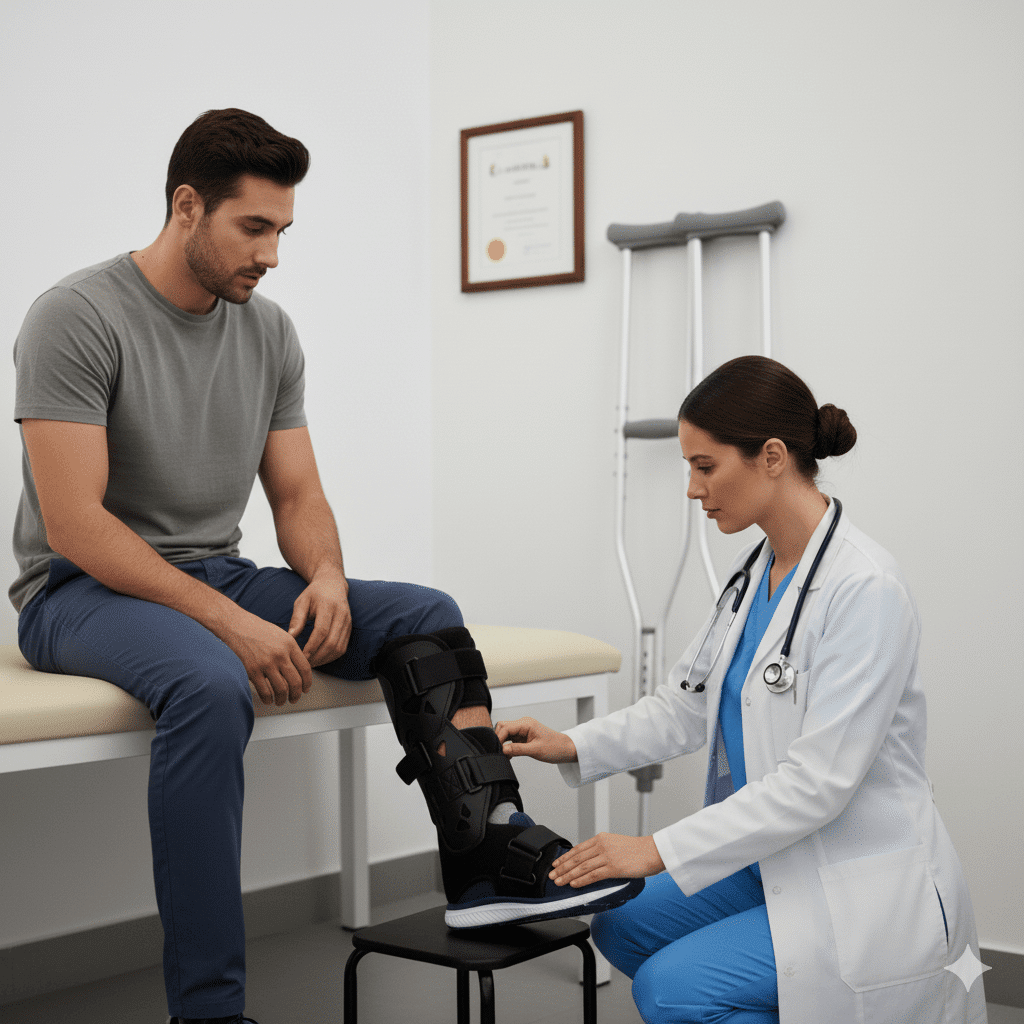What Are Custom Orthotics and Bracing?
A Specialist’s Solution for Pain, Instability, and Poor Biomechanics
Custom orthotics and braces are prescribed medical devices designed to treat a wide range of foot and ankle problems. Unlike generic inserts, they are crafted specifically for your feet to correct faulty biomechanics, provide support, and relieve pain.
- Custom Orthotics are prescription devices worn inside your shoes. They are designed to control abnormal foot motion, support the arch, and redistribute pressure away from painful areas.
- Bracing involves larger, external devices (like an Ankle-Foot Orthosis or AFO) used to stabilize, immobilize, or protect a joint, particularly the ankle.
At City Orthopaedics & Sports Medicine, our team of foot and ankle specialists, including Foot and Ankle Surgeon Dr. Hymowitz uses a comprehensive evaluation to determine if these devices are the right solution to improve your function and reduce your pain.

Custom Orthotics vs. Over-the-Counter Insoles: What’s the Difference?
This is a critical distinction. While both are placed in your shoes, their function and purpose are vastly different.
- Over-the-Counter (OTC) Insoles: These are mass-produced arch supports made of cushioning materials like gel or foam. They can provide temporary comfort and shock absorption but are not designed to correct underlying biomechanical problems. Think of them like non-prescription reading glasses.
- Custom Prescription Orthotics: These are medical devices prescribed by a foot and ankle specialist after a thorough examination. They are fabricated from a precise 3D scan or mold of your feet and are designed to correct your specific foot pathology. They are made of durable, professional-grade materials to control foot function and provide lasting support. Think of them as prescription glasses tailored to your exact vision needs.
What Conditions Can Custom Orthotics Treat?
Custom orthotics are a cornerstone of non-surgical care. They are highly effective in treating:
- Plantar Fasciitis and Heel Pain
- Flatfoot (Pes Planus) and Posterior Tibial Tendon Dysfunction (PTTD)
- High Arches (Pes Cavus)
- Bunions and Hammertoes (to slow progression and relieve pressure)
- Nerve Pain (Morton’s Neuroma)
- Tendonitis (Achilles, Peroneal, etc.)
- Arthritis of the foot and ankle
- Diabetic Foot Care (to offload pressure and prevent ulcers)
- Shin Splints and other sports-related injuries

What Conditions Require Bracing?
For conditions requiring more significant stability, a brace may be prescribed:
- Severe PTTD with a collapsed arch
- Chronic ankle instability and recurrent sprains
- Post-surgical recovery and support
- Arthritis requiring joint stabilization
- Certain neurological conditions like Drop Foot
Find Your Foundation for Relief
Painful feet shouldn’t hold you back. Let our specialists determine if custom orthotics or bracing can provide the support and stability you need to move comfortably again.
The Process: How We Create Your Custom Orthotics
Creating a true custom orthotic is a precise, multi-step process:
- Comprehensive Evaluation: The process begins with a thorough biomechanical examination. We will assess your foot structure, muscle strength, and range of motion, and perform a gait analysis to observe how you walk.
- Casting or Scanning: A precise, 3D impression of each foot is taken in a neutral, corrected position. This is done using a plaster cast, a foam impression box, or, most commonly, a state-of-the-art digital scanner.
- Prescription and Fabrication: We write a detailed prescription based on your diagnosis. This prescription, along with your 3D foot model, is sent to a specialized laboratory. The lab then fabricates your orthotics from high-quality materials to our exact specifications.
- Fitting and Dispensing: When your orthotics are ready, you will return for a fitting appointment. We will ensure they fit correctly in your shoes, make any necessary adjustments, and provide instructions on how to wear them.

Getting the Most Out of Your Orthotics and Braces
To ensure the best results, it’s important to follow a few guidelines:
- Break-in Period: There is an adjustment period as your body gets used to the new alignment. We will instruct you to wear them for gradually increasing periods over the first one to two weeks.
- Proper Footwear: Orthotics and braces work best in stable, supportive shoes. We can provide recommendations for appropriate footwear.
- Follow-Up: We schedule follow-up appointments to ensure the devices are working effectively and to make any needed adjustments.
When faced with pain, injury, or discomfort in your foot or ankle, seeking a timely and precise diagnosis is essential. Dr. Jason Hymowitz, a distinguished board-certified foot and ankle surgeon, offers the expertise and compassionate care you need to move forward with confidence. Renowned for his skill in sports medicine, musculoskeletal deformities, and post-traumatic and cosmetic surgical reconstruction, Dr. Hymowitz blends advanced technology with evidence-based treatment to deliver exceptional outcomes. Whether through conservative care, minimally invasive techniques, or complex reconstructive surgery, he is dedicated to restoring your mobility, relieving your pain, and helping you return to the activities you love. Your path to lasting relief and improved quality of life begins with Dr. Hymowitz — a trusted expert committed to your well-being.


